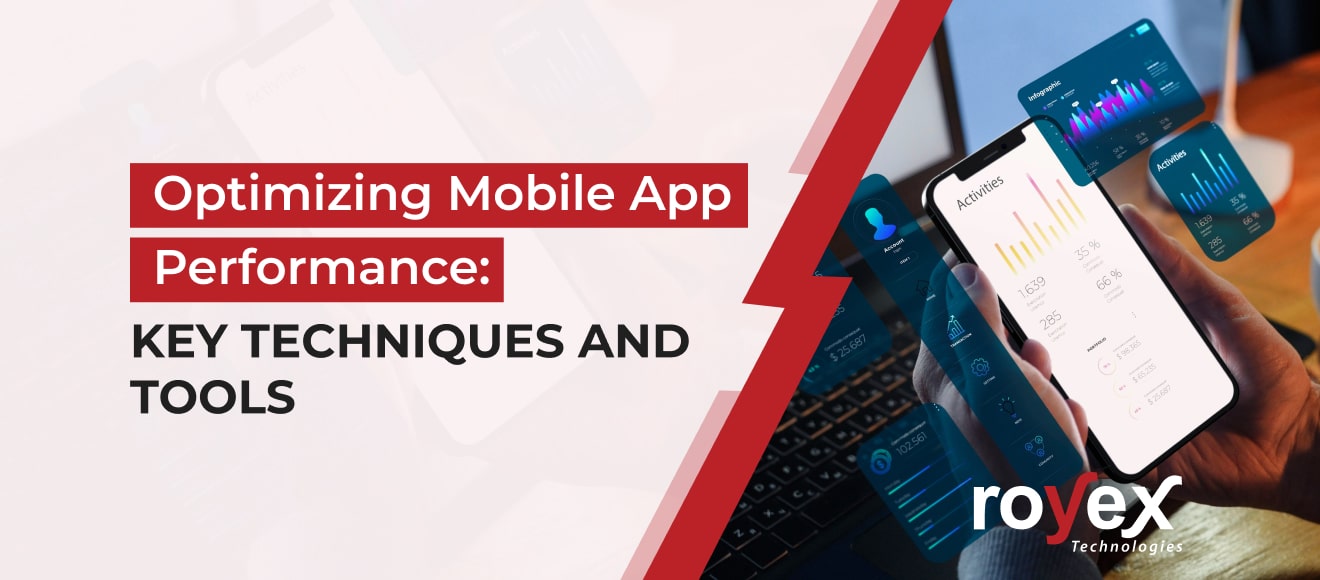
Optimizing Mobile App Performance: Key Techniques and Tools
In today’s crowded app market, delivering high performance is more important than ever. Users expect apps to be fast, responsive, and reliable, without any annoying delays or glitches. When an app takes too long to load, crashes in the middle of use, or drains the battery quickly, it frustrates users and leads them to delete it from their devices. With so many other app options available, even a small performance issue can cause users to move on to a competitor's app that offers a smoother experience. This is why mobile app performance is not just a technical concern; it’s a key factor that can make or break the app’s success in attracting and keeping users.
To stay competitive, developers need to focus on optimizing their apps so they deliver a seamless experience without hiccups. Improving app performance means making sure the app runs smoothly, uses memory efficiently, and loads quickly, even on older devices. In this article, we’ll look at the most effective ways to tackle these challenges by using the right techniques and tools. We will guide you through practical strategies that help reduce lag, prevent crashes, and save battery life, helping your app stand out from the rest. By the end, you’ll understand how to create high-performing mobile apps that not only satisfy user expectations but also keep them coming back for more.
Why Mobile App Performance Matters

A poor-performing app can damage a brand’s reputation, lead to negative reviews, and cause users to abandon the app altogether. Here’s why performance optimization is crucial:
-
User Retention: Studies show that 50% of users will uninstall an app if it is slow, crashes, or consumes too much power.
-
App Store Ranking: Performance issues such as slow load times and crashes can negatively affect app store rankings, making it harder for potential users to find your app.
-
Revenue Impact: If your app depends on in-app purchases or advertisements, a poor experience can significantly affect revenue as frustrated users are less likely to engage.
-
Device Constraints: Mobile devices have limited resources compared to desktops, such as memory, processing power, and battery life. Optimizing performance ensures your app runs smoothly on a variety of devices.
Key Techniques to Optimize Mobile App Performance
1. Minimizing App Startup Time
The first impression matters. Users expect apps to launch within a couple of seconds. To achieve this, you should:
-
Lazy Loading: Load only the necessary resources on startup, deferring the loading of non-critical content until later.
-
Minimize Initial Dependencies: Reduce the number of API calls, network requests, and database queries made during app initialization.
-
Optimize Splash Screen: If your app uses a splash screen, ensure it's simple and loads quickly. Avoid loading large images or unnecessary animations during this time.
2. Optimizing Network Calls
Mobile apps often rely heavily on network requests to fetch data. Poorly optimized network interactions can slow down an app and result in high data consumption.
-
Use Caching: Implement caching strategies to store frequently accessed data locally, reducing the need for repetitive network calls.
-
Compression: Compress data before transmitting it over the network to minimize bandwidth usage and reduce load times.
-
Optimize API Calls: Avoid overfetching data; only request the information that the app currently needs. Use pagination and background data fetching when possible.
-
Connection Management: Implement logic to manage network connections intelligently. Retry failed requests or queue network operations for when the user is connected to Wi-Fi.
3. Reducing App Size
Large apps take longer to download and consume more storage space, which can deter users, especially in markets with limited internet connectivity and device storage.
-
Use ProGuard/R8: For Android apps, tools like ProGuard and R8 can shrink the code, remove unused classes, and optimize resources.
-
Split APKs (Android) and App Thinning (iOS): These tools allow you to deliver only the necessary parts of the app to specific devices, reducing the overall size.
-
Compress Images and Assets: Use modern image formats such as WebP, and compress other assets to reduce their footprint.
4. Improving Rendering and UI Performance
Smooth and responsive interfaces are key to good user experience. Ensure your UI elements render quickly and without lag.
-
Optimize Rendering: Minimize the number of views being rendered at a time. For example, use RecyclerViews in Android or UICollectionViews in iOS to handle large lists more efficiently.
-
Reduce Overdraw: Overdraw occurs when a pixel is drawn multiple times within a single frame. Optimize your layout to reduce overdraw, ensuring that background layers are not unnecessarily rendered.
-
Efficient Animations: Use hardware-accelerated animations and avoid complex, CPU-intensive transitions that can lead to stuttering, especially on low-end devices.
5. Battery and Memory Optimization
A well-optimized app minimizes power consumption and memory usage. Poor memory management can lead to frequent crashes, while excessive battery usage can drive users away.
-
Background Processing: Avoid running heavy tasks in the background. Use techniques like work queues, batching, and offloading to background services (e.g., WorkManager on Android or Background Tasks in iOS).
-
Release Memory Properly: Ensure memory is properly released after use by implementing memory management best practices. For instance, dispose of objects, unsubscribe from listeners, and avoid memory leaks by using tools like Android Studio’s Profiler or Xcode’s Instruments.
-
Optimize GPS and Sensors Usage: Access to GPS, camera, and sensors can quickly drain battery life. Use these resources only when necessary, and implement techniques like location batching to reduce power consumption.
6. Offline Functionality
Designing your app to function well in an offline state improves performance and user experience. When an app can provide core functionality without needing constant network access, it becomes more efficient and reliable.
-
Local Database: Store data locally using SQLite, Realm, or Room (Android) so that the app can function without an internet connection.
-
Sync Mechanisms: Implement synchronization strategies to automatically sync data with the server when the network connection is restored, ensuring users don’t experience disruptions.
Essential Tools for Optimizing Mobile App Performance

1. Android Studio Profiler
For Android apps, the Android Studio Profiler is an all-in-one tool that helps developers monitor the app’s CPU, memory, network, and energy consumption. The Profiler provides real-time insights into how the app behaves under various conditions, helping you detect memory leaks, network bottlenecks, or inefficient rendering.
2. Xcode Instruments
Xcode’s Instruments is a powerful tool for iOS app performance optimization. It allows developers to profile different aspects of the app, including memory usage, CPU performance, disk I/O, and network activity. Instruments can also simulate different conditions (e.g., low memory or slow network) to help identify potential performance issues early.
3. Firebase Performance Monitoring
Firebase provides a performance monitoring tool that helps you track the performance of your app in real-time across various user devices. It gives insights into app startup time, network request performance, and screen rendering time, allowing you to optimize the app based on actual user conditions.
4. LeakCanary
Memory leaks are a common issue in mobile apps, often leading to crashes or poor performance over time. LeakCanary is a popular open-source library for Android that detects memory leaks and helps developers identify the source of the issue.
5. AppThwack
AppThwack is a mobile app testing tool that allows developers to test their apps on a wide variety of devices, operating systems, and configurations. This helps in identifying device-specific performance issues early in the development cycle.
Conclusion
Mobile app performance optimization is an ongoing process that involves careful attention to both the user experience and the app’s interaction with device resources. By focusing on efficient rendering, managing memory and network usage, reducing app size, and leveraging the right tools, developers can build apps that perform smoothly and provide users with a seamless, frustration-free experience.
Staying up to date with the latest optimization techniques and continuously monitoring app performance post-launch ensures that your app remains competitive in a fast-moving marketplace. A well-optimized app not only enhances user satisfaction but also drives better engagement, retention, and ultimately, success.
Established in 2013, Royex Technologies is a leading mobile app development company in Dubai, that provides innovative solutions for small, medium, and large-scale companies. We specialize in responsive web development, mobile app development, CRM integration, AI solutions for website & mobile applications, and many more. Our extensive experience in mobile app development will help you to take your business to a high level.
Check our portfolio to see our previous works. Contact us via email at info@royex.net or call us at +971566027916 to get started with us.





